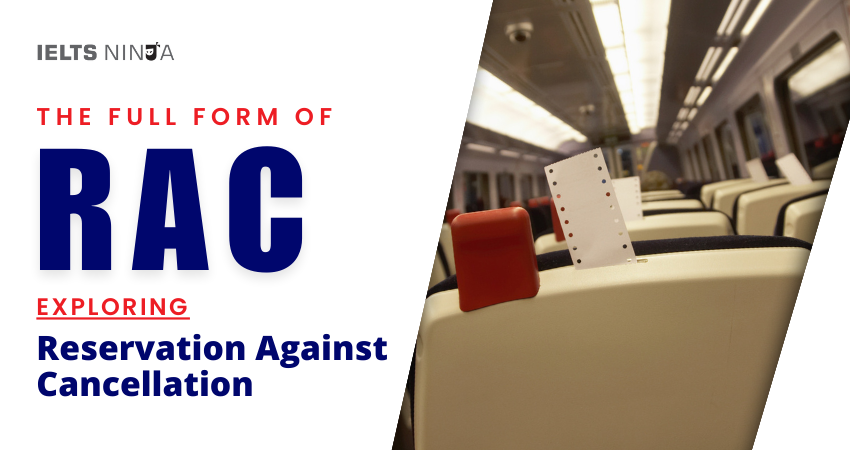In the context of railway travel and ticket booking, the full form of “RAC” stands for “Reservation Against Cancellation.” RAC is a unique ticketing system employed by many railway authorities worldwide to maximize seat utilization on trains and accommodate more passengers. In this comprehensive guide, we will explore the details of RAC, how it works, its significance for travelers, and how it differs from other ticketing categories.
What is RAC?
Reservation Against Cancellation (RAC) is a ticketing category used in railway systems to ensure that as many passengers as possible have the opportunity to travel on a particular train. The RAC system allows passengers to reserve a seat or berth, but it does not guarantee a full berth until the train’s final reservation chart is prepared.
Key Aspects of RAC
Partial Berth Allocation:
When a passenger books an RAC ticket, they are assigned a shared berth that must be shared with another RAC ticket holder. This means that two passengers share a single berth or seat during the journey.
Waitlist vs. RAC:
In the hierarchy of ticket categories, passengers with confirmed reservations hold the highest priority. Below confirmed tickets are RAC tickets and waitlist (WL) tickets. Passengers with WL tickets have not been allocated any berths or seats and are on a waiting list for confirmation.
Berth Allocation:
As passengers with confirmed reservations cancel their tickets, berths become available. RAC tickets are gradually upgraded to full berths in the order of booking. For example, if a passenger cancels a confirmed ticket, the first RAC ticket is upgraded to a full berth.
Coach Configuration:
Railway coaches are configured to accommodate RAC passengers. Typically, two passengers share the lower berth, and two share the upper berth. The middle berth is not used for seating or sleeping.
Significance for Passengers:
RAC offers passengers the assurance of having a seat or berth for their journey, even if it is shared with another passenger. It provides an opportunity for last-minute travelers to secure a reservation, although the exact allocation may vary.
Final Chart Preparation:
The final reservation chart is prepared a few hours before the train’s departure. At this stage, RAC tickets that have not been upgraded to full berths may remain in RAC status or be moved to WL if no berths are available.
Cancellation and Refunds:
Passengers with RAC tickets can cancel them, and refunds are provided based on railway rules and regulations. Cancellation charges may apply.
Also Read: Best online IELTS coaching & training academy
Significance of RAC
Reservation Against Cancellation (RAC) is significant for both railway authorities and passengers for several reasons:
- Optimizing Seat Utilization: RAC allows railway authorities to maximize seat utilization on trains, ensuring that trains are efficiently occupied.
- Flexibility for Passengers: Passengers benefit from RAC by having a confirmed seat or berth, albeit shared. It provides an option for those who may not have secured a confirmed reservation.
- Last-Minute Travel: RAC is particularly useful for travelers who need to make spontaneous or last-minute journeys, as it offers a chance to secure a seat.
- Fairness in Allocation: RAC ensures a fair allocation of berths and seats, as they are distributed in the order of booking.
- Revenue Generation: Railway authorities can generate additional revenue by accommodating more passengers in RAC status.
Conclusion
Reservation Against Cancellation (RAC) is a ticketing category employed by railways to optimize seat utilization and provide passengers with an opportunity to secure seats or berths, even if they are shared. It plays a crucial role in accommodating more travelers and ensuring fairness in ticket allocation, making train travel more accessible and flexible for passengers.








